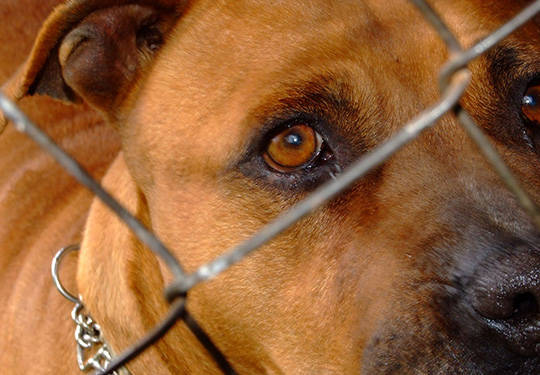For a dog to be declared dangerous, or potentially dangerous in Auburn, it must have attacked, bitten, endangered or injured a person or a domestic animal, without provocation.
Or, in a menacing fashion, chased or approached somebody on a street, on a sidewalk or on public grounds.
But just how many dogs meet the criteria?
According to a report Auburn Police Cmdr. Mike Hirman presented to a study session of the City Council on Monday evening at Auburn City Hall, the Animal Control Authority, which the chief of police designates, has investigated 109 cases of dangerous or potentially dangerous dogs to date, and of those, only 25 owners have registered their animals with the city because of actions that merit inclusion on the roster of potentially dangerous or dangerous dogs.
Of those 25 dogs, 13 are registered as potentially dangerous, and 12 are registered as dangerous because of something they’ve actually done.
Overall, 372 dogs are registered with the City as potentially dangerous, not because of anything they have done, but solely, exclusively, because of their breed. Though some may reflexively apply “dangerous,” or “potentially dangerous” to “pit bull-terrier” when they hear the words, of the 25 dogs mentioned above, only seven that cross both categories are of the pit-bull terrier breed, and of the overall 372, 216 are pit-bull terriers or a mix of the breed.
Unless the dog is involved in an event that qualifies it as potentially dangerous, there is no fee for this type of registration. The owner of an animal that does meet the criteria, however, has to pay a $100 yearly fee.
Hirman said the Animal Control Authority generally applies to the animal control officer but also to any commissioned, law-enforcement officer. It can declare an animal dangerous, or potentially dangerous, based on an act. The ACA provides notification and appeals for any action police take.
“Animal control, whether it’s the ordinance or enforcement, has to do with animal – mostly dog – owners, and not necessarily focusing on the dog. This is about owners controlling their domestic animals,” Hirman said
The ACA investigated 61 potentially dangerous or dangerous dog complaints in 2016 and has investigated 48 to date in 2017. The number of cases that met the potentially dangerous dog criteria was 61 in 2016 and 48 in 2017.
Typically, an officer issues a warning notice, an infraction or a criminal citation, but he or she may also impound the dog. During the second quarter of 2017, Auburn’s animal control officer impounded 56 animals, issued 25 warnings, 124 infractions and 17 criminal citations.
If the animal control officer or the ACA declares a dog as potentially dangerous, or dangerous, the owner may appeal the decision to the ACA. At this time, Assistant Police Chief William Pierson handles those appeals. The police department has conducted 13 hearings and upheld all but one of the animal control officer’s designations.
According to the report, there were 1,883 animal-related calls for service in 2016, and there have been 1,649 calls to date in 2017. Every month, the animal control officer handles 160 calls for service, Hirman said, adding that officers approach each call based on the circumstances.
In 2016, the APD wrote 186 animal-related reports and in 2017 to date, 160.
Auburn’s animal control officer does not follow up on all potentially dangerous dogs based on the breed specific registration requirement. Having to follow up on 372 registrations every year would be time consuming and problematic.
At present, the City does not have an animal control officer because its former ACO, George Winner, resigned earlier this year to take a job with Auburn’s Code Enforcment Division. The City has now budgeted funds for two, full-time animal control officers starting in 2018, and is accepting applications for the positions.
The Animal Control Authority has pro-active measures to manage or enforce the ordinance’s references to potentially dangerous or dangerous dogs in the city. Pro-active measures in the future may take the form of more community awareness and education as to the ordinance and its requirements.



